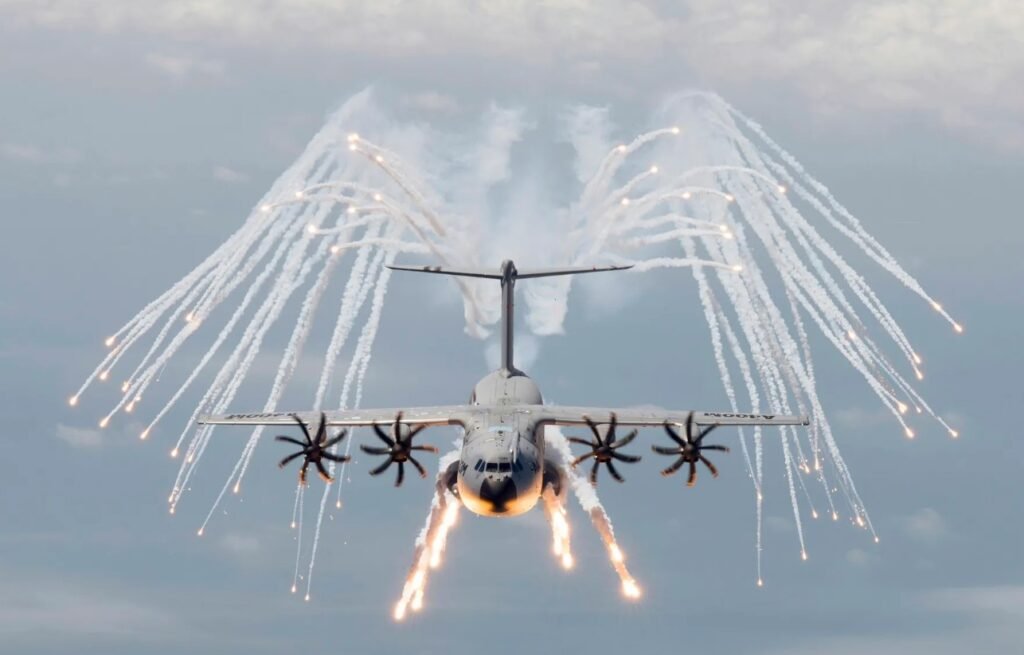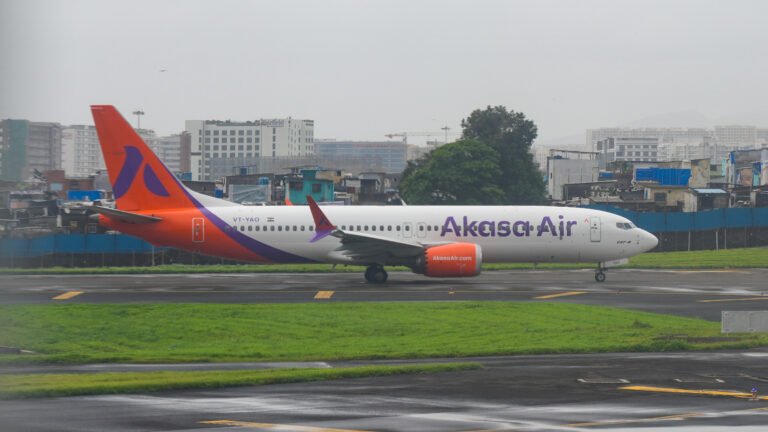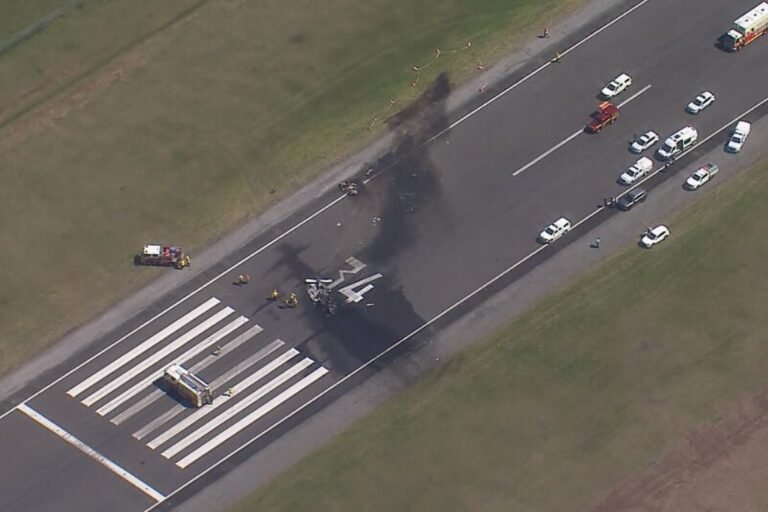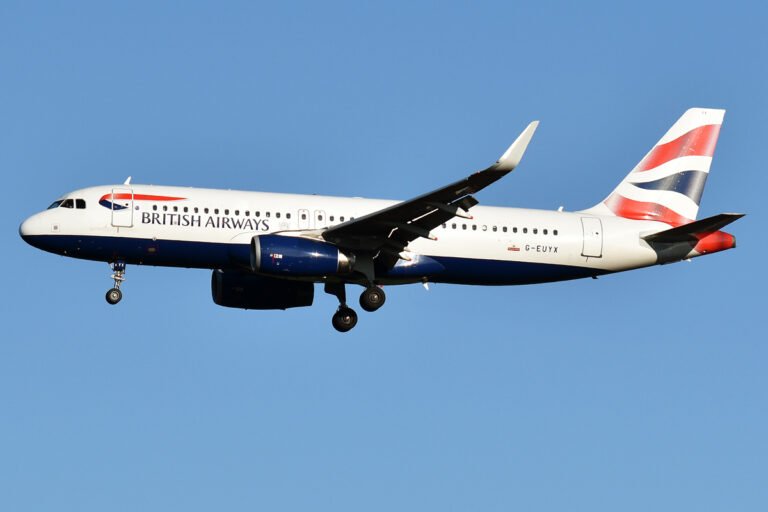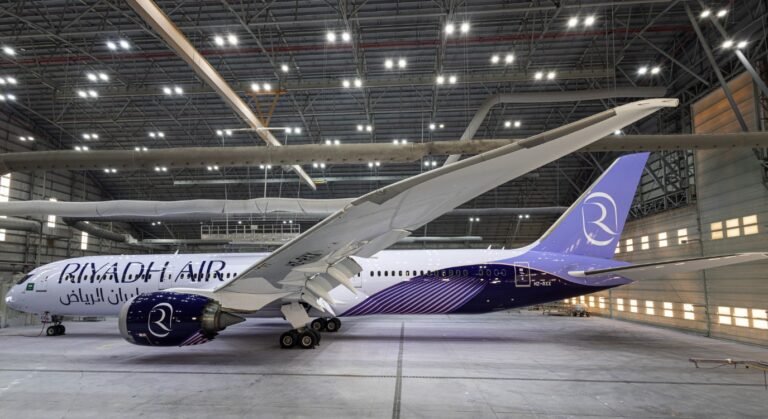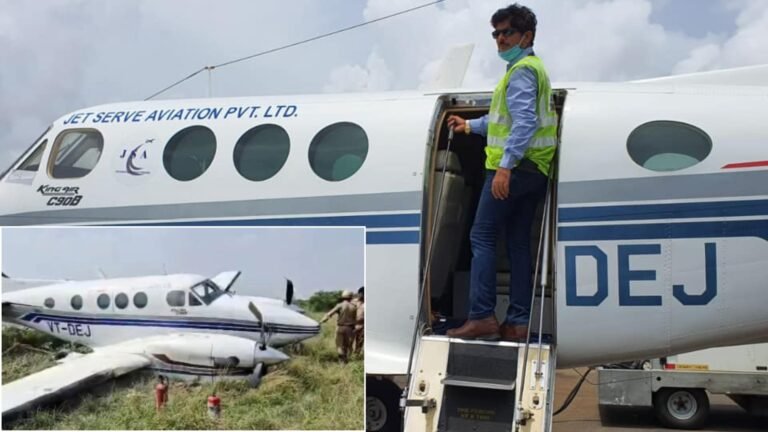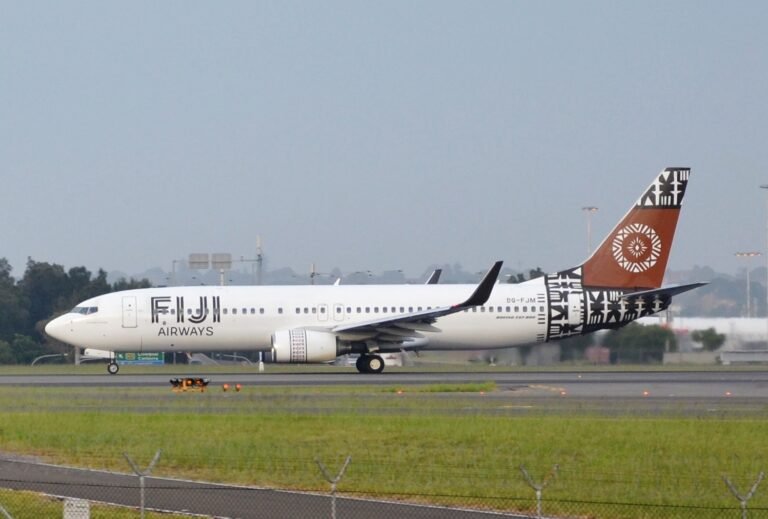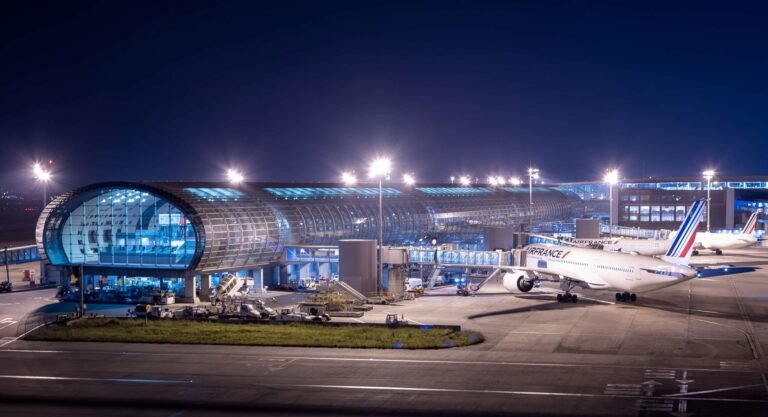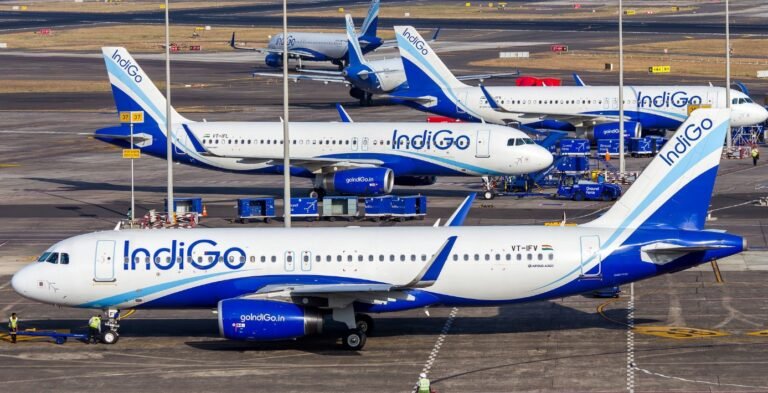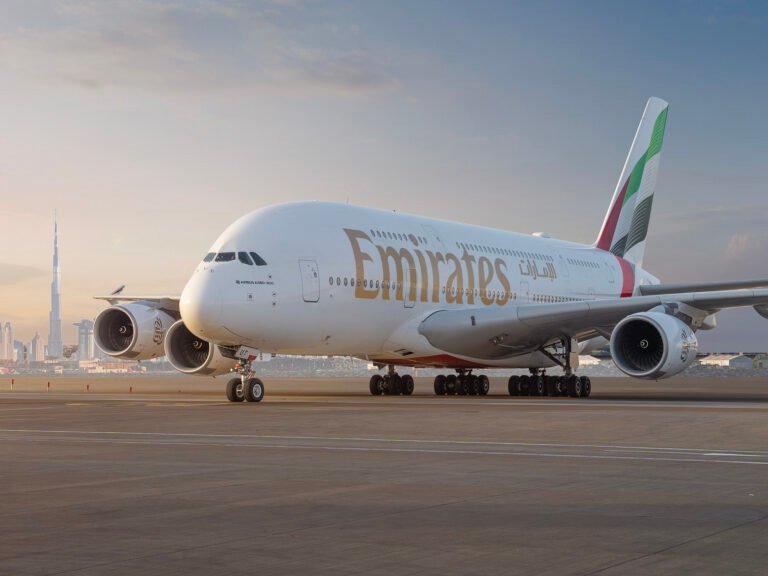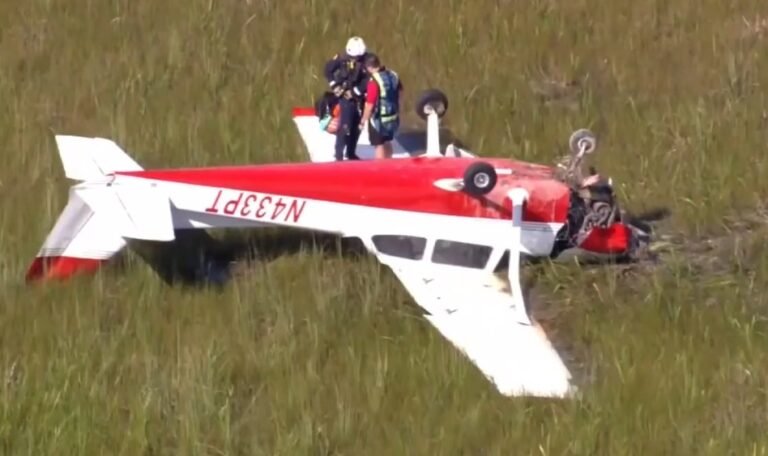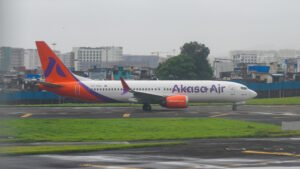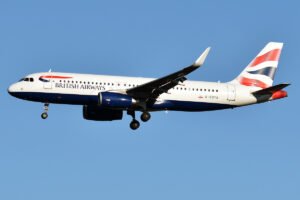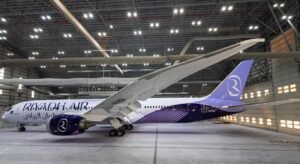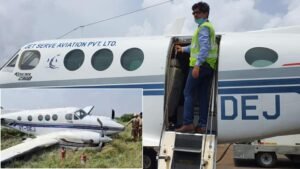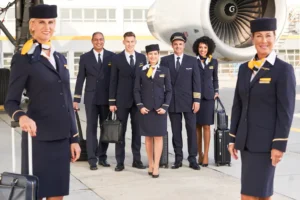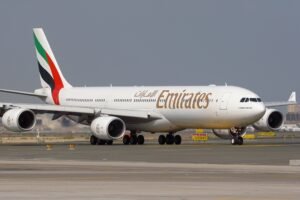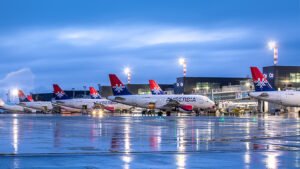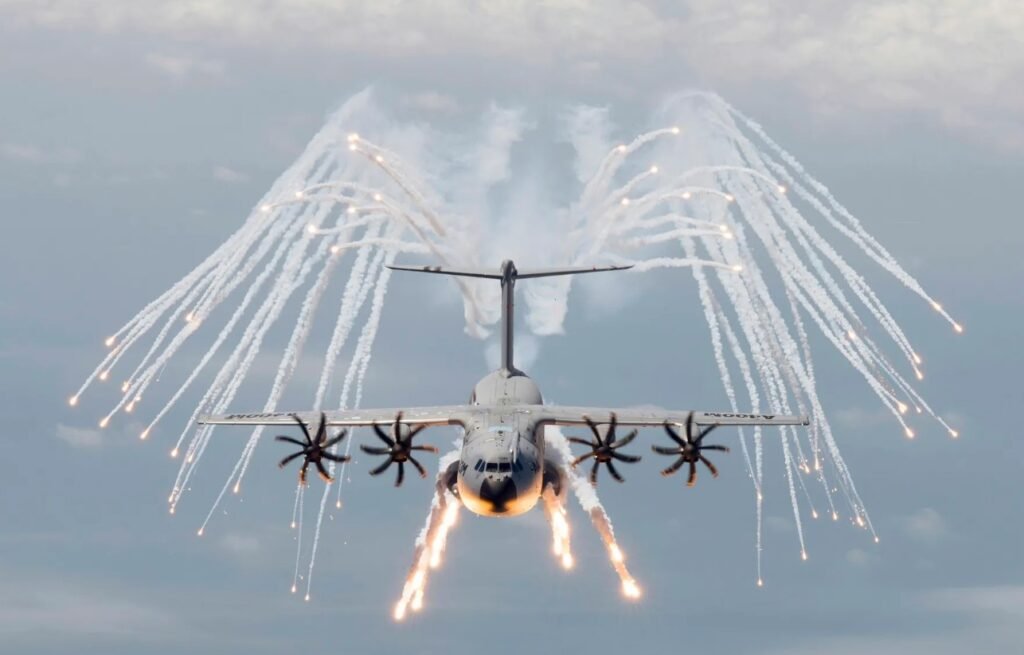
Paris, France: Airbus concluded a commanding performance at the 2025 Paris Air Show with a wide-ranging portfolio of new aircraft sales, defense procurements, and advanced technology collaborations. With a total business value exceeding $21 billion, the European manufacturer reinforced its position as a global aviation leader across both commercial and government sectors.
Robust Commercial Orders Across Single-Aisle and Widebody Families
Airbus secured substantial commitments for its A220, A320neo, and A350 aircraft families from key carriers in Asia and the Middle East. Vietnam’s VietJet committed to 100 A321neo aircraft to support its continued regional and international growth. The agreement includes flexibility for further expansion, with an additional 50 aircraft under consideration. The A321neo remains Airbus’s highest-selling single-aisle jet, with strong demand driven by fuel efficiency, operational range, and passenger capacity.
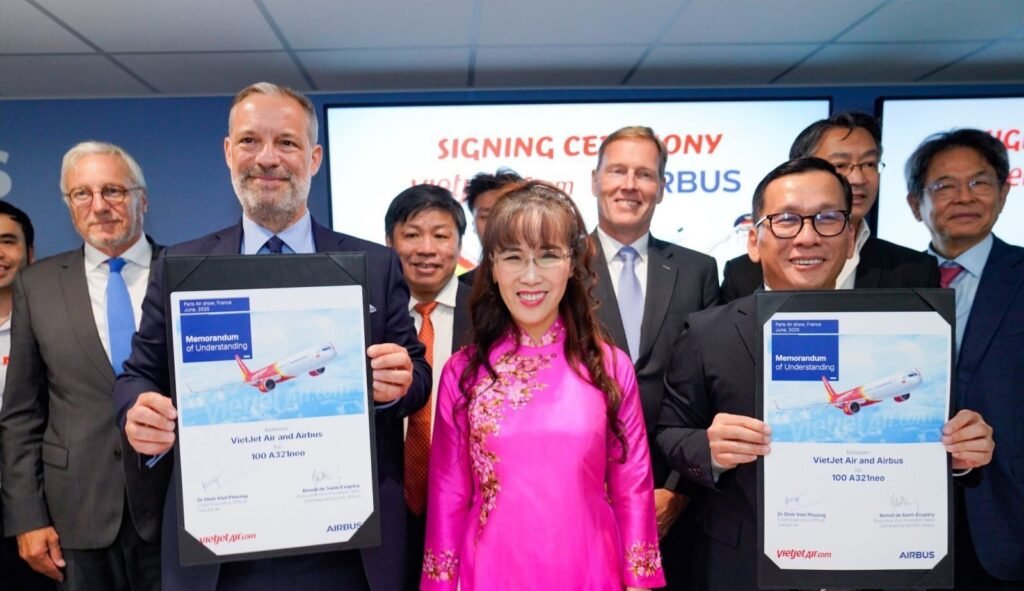
Saudi leasing firm AviLease signed firm orders for 30 A320neo family aircraft, alongside 10 A350 freighters representing a strategic move into both passenger and cargo leasing markets. The order is structured to allow for scalability, with provisions for future growth in widebody capacity as market demand increases.
Taiwan’s STARLUX Airlines further expanded its long-haul ambitions by signing a letter of intent for 10 additional A350-1000 aircraft. The airline, which already operates A350-900s, aims to bolster its premium service model on trans-Pacific and European routes. The A350-1000 offers increased capacity and extended range, aligning with STARLUX’s high-yield network strategy.
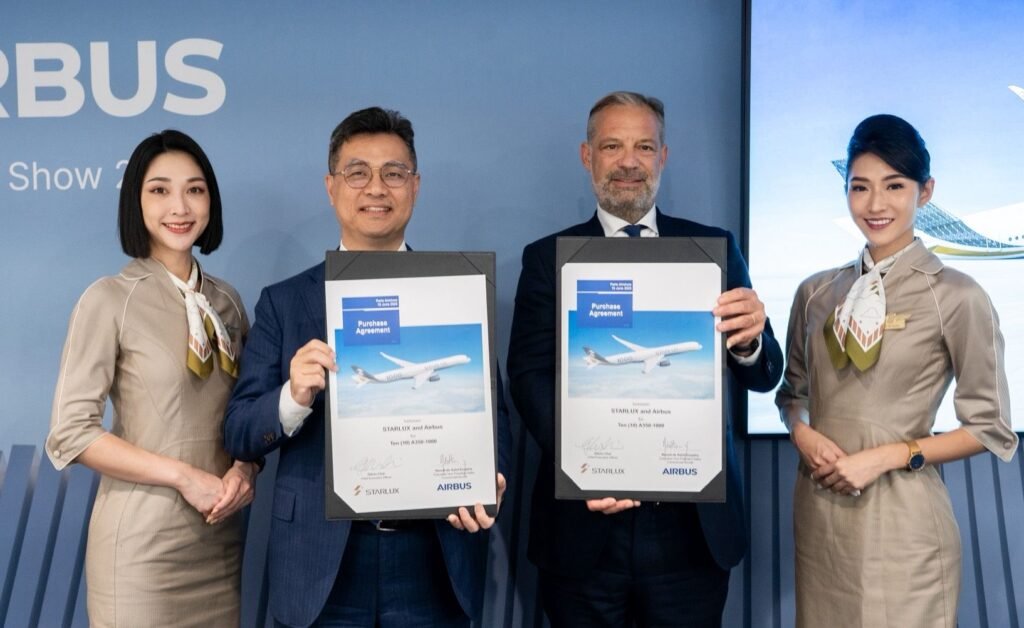
Expansion of European Defense Capabilities
On the defense front, Airbus formalized an agreement with the French and Spanish Ministries of Defence for the delivery of seven additional A400M aircraft four for France and three for Spain. These orders align with existing fleet strategies and underscore continued investment in European strategic lift capabilities. The A400M fleet will benefit from ongoing system upgrades, including enhanced self-protection suites, modular configurations for firefighting, and improved autonomy for multi-role missions.
Airbus Helicopters and Leonardo also confirmed the launch of a joint capability study for the NH90 Block 2 evolution, targeting upgrades in mission flexibility, avionics standardization, and manned-unmanned teaming. The program, initiated at the request of NAHEMA (NATO Helicopter Management Agency), aims to harmonize configurations across multiple NATO operators and extend the platform’s service life.
Strategic Focus on Hydrogen and Digital Innovation
As part of its long-term sustainability objectives, Airbus announced a new partnership with MTU Aero Engines to develop hydrogen fuel-cell propulsion systems. The agreement will advance the technical groundwork for integrating hydrogen-electric engines on future regional and short-haul aircraft platforms. The collaboration supports Airbus’s ZEROe initiative, with the first flight test of a hydrogen demonstrator targeted before the end of the decade.
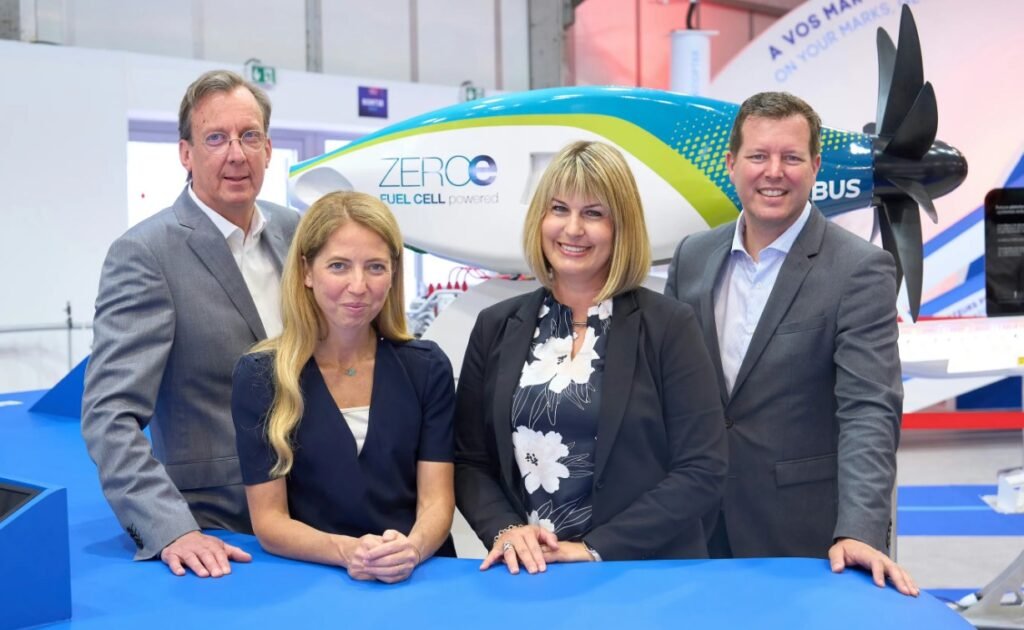
In the digital systems domain, Airbus entered a cooperation agreement with Critical Software to co-develop embedded safety-critical software. The scope includes avionics, flight management systems, and cabin operations technology. This partnership is expected to enhance the reliability and cybersecurity of next-generation aircraft architectures and complements Airbus’s wider focus on digital transformation.
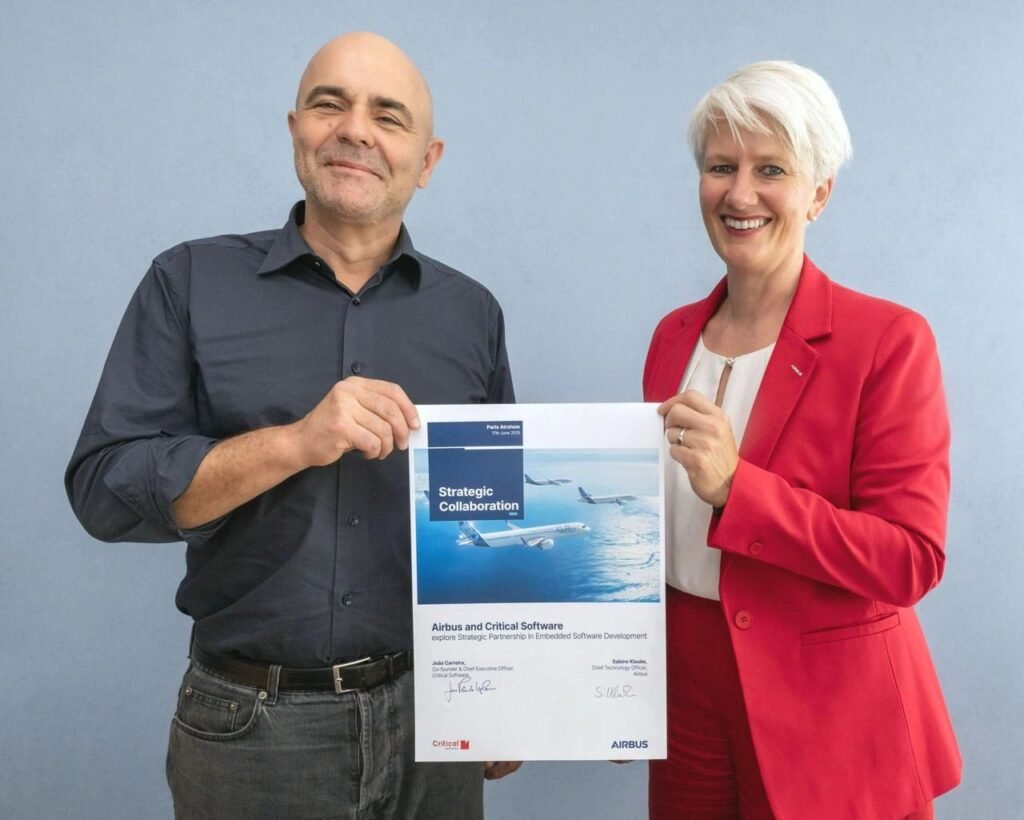
Financial Strategy and Shareholder Commitment
Airbus used the platform of the show to reaffirm its full-year 2025 financial guidance. The company also announced a revised dividend policy, raising its payout range to 30–50 percent of earnings, reflecting stronger cash flow generation and order backlog stability. Management reiterated its medium-term target of achieving a cash conversion ratio near one, supported by delivery volume increases and sustained demand across both passenger and freighter segments.

